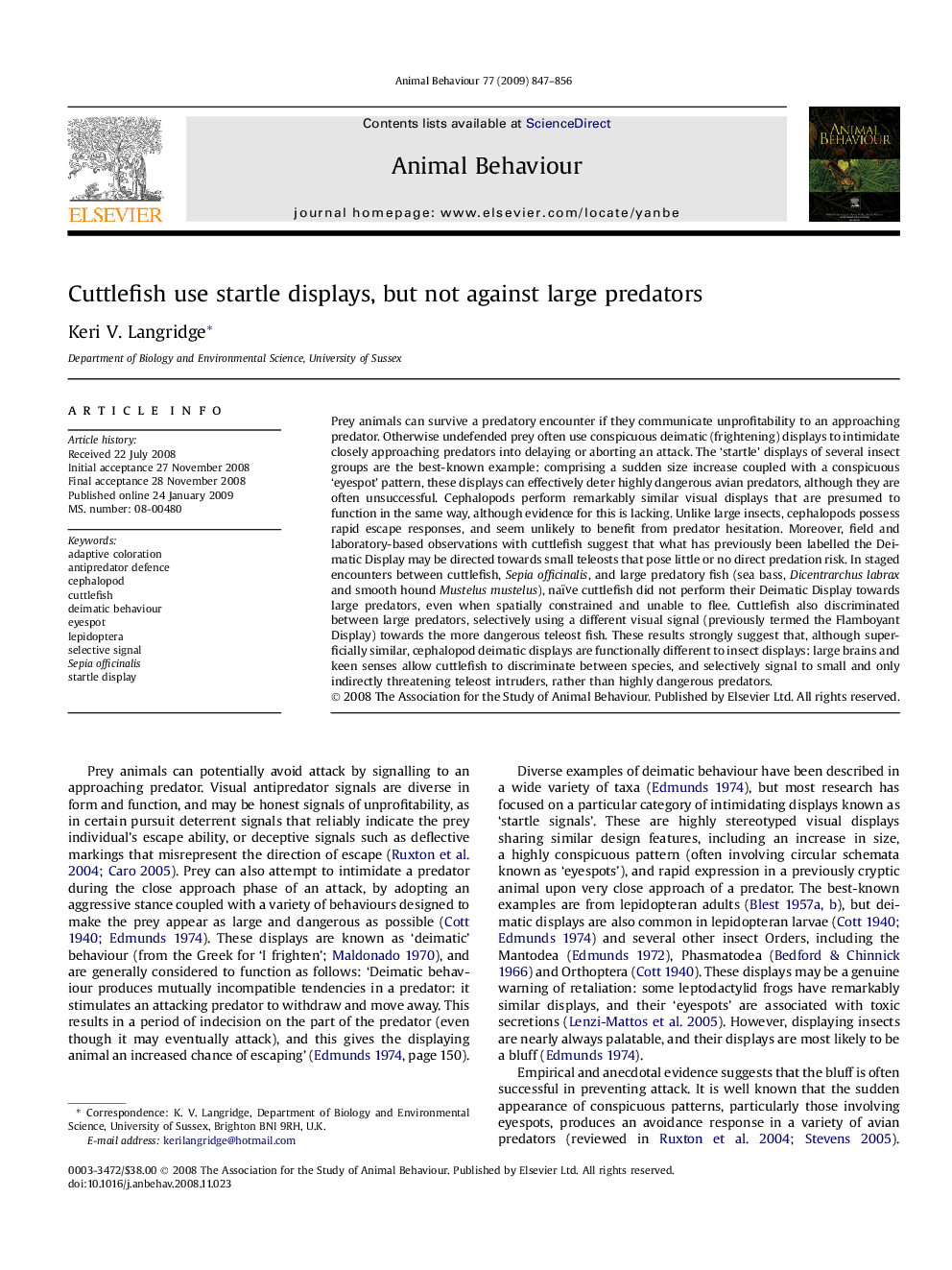| Article ID | Journal | Published Year | Pages | File Type |
|---|---|---|---|---|
| 2417825 | Animal Behaviour | 2009 | 10 Pages |
Prey animals can survive a predatory encounter if they communicate unprofitability to an approaching predator. Otherwise undefended prey often use conspicuous deimatic (frightening) displays to intimidate closely approaching predators into delaying or aborting an attack. The ‘startle’ displays of several insect groups are the best-known example: comprising a sudden size increase coupled with a conspicuous ‘eyespot’ pattern, these displays can effectively deter highly dangerous avian predators, although they are often unsuccessful. Cephalopods perform remarkably similar visual displays that are presumed to function in the same way, although evidence for this is lacking. Unlike large insects, cephalopods possess rapid escape responses, and seem unlikely to benefit from predator hesitation. Moreover, field and laboratory-based observations with cuttlefish suggest that what has previously been labelled the Deimatic Display may be directed towards small teleosts that pose little or no direct predation risk. In staged encounters between cuttlefish, Sepia officinalis, and large predatory fish (sea bass, Dicentrarchus labrax and smooth hound Mustelus mustelus), naïve cuttlefish did not perform their Deimatic Display towards large predators, even when spatially constrained and unable to flee. Cuttlefish also discriminated between large predators, selectively using a different visual signal (previously termed the Flamboyant Display) towards the more dangerous teleost fish. These results strongly suggest that, although superficially similar, cephalopod deimatic displays are functionally different to insect displays: large brains and keen senses allow cuttlefish to discriminate between species, and selectively signal to small and only indirectly threatening teleost intruders, rather than highly dangerous predators.
